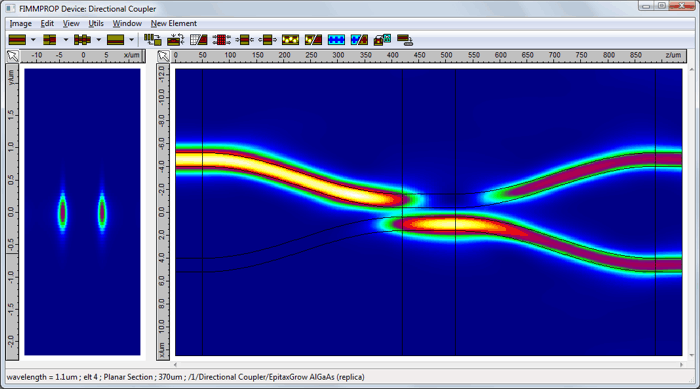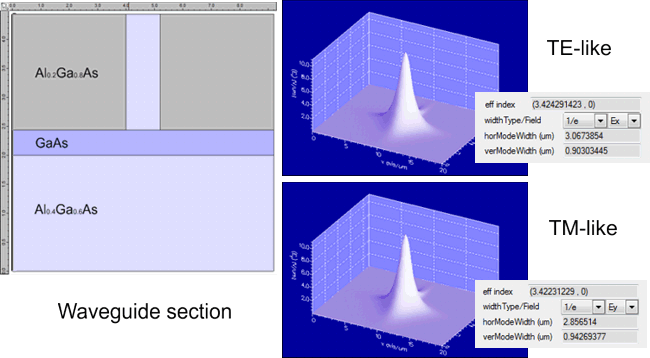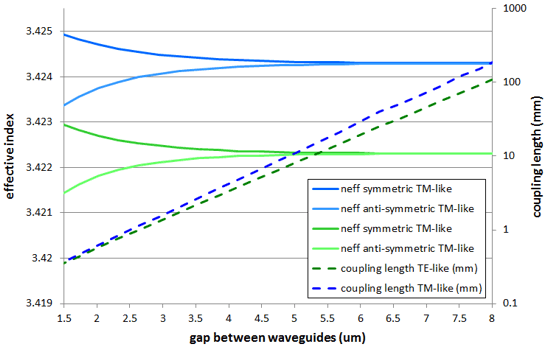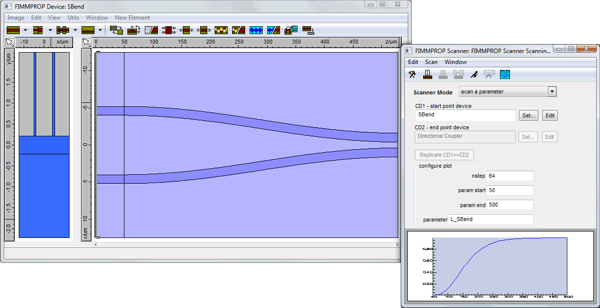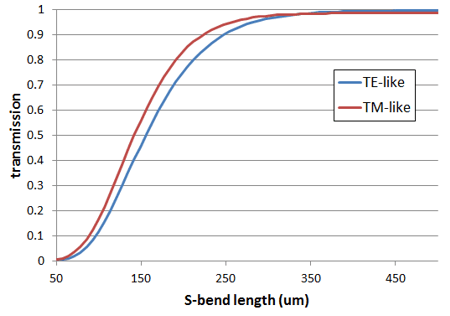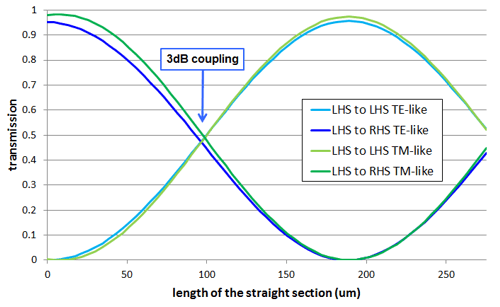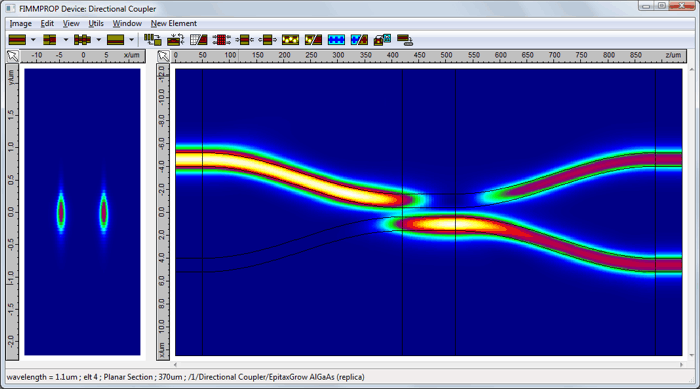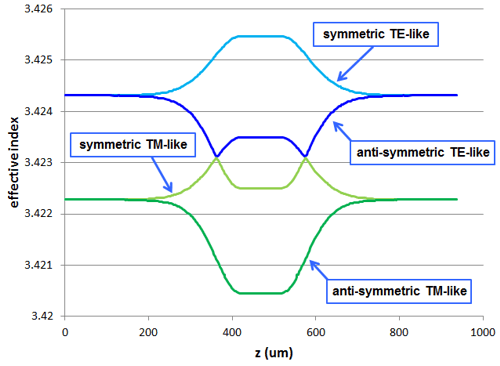FIMMPROPA bi-directional optical propagation tool |
   |
A 3dB polarisation-insensitive directional couplerSimulation in fully vectorial 3D with FIMMPROP softwareFIMMPROP was used to simulate an integrated directional coupler made on a III-V AlGaAs/GaAs chip. The coupler was designed so as to be polarisation independent. FIMMPROP was able to model this structure with a precision of 0.5% in 11 minutes on a standard desktop computer (full vectorial 3D), simulating both TE-like and TM-like polarisations simultaneously. FIMMPROP was then able to scan the length of the directional coupler instantly, allowing us to identify the optimal coupling length.
Why use FIMMPROP for this simulation?FIMMPROP is a very efficient tool for the simulation and modelling of optical tapers:
Preliminary design stepsThis structure relies on a AlGaAs/GaAs rib waveguide, whose cross-section is shown here along with the majority E-field components and the mode properties. In order to make the design polarisation insensitive, the waveguide was design so as to obtain similar effective indices and mode sizes for horizontal (TE-like) and vertical (TM-like) polarisations.
The dimensions of the waveguide are summarised in
the table below.
We used FIMMWAVE's built-in waveguide scanner to optimise the gap between the two waveguides at the ends of the directional coupler; the separation had to be large enough for the waveguides to be fully decoupled. This was done by calculating the evolution of the symmetric and anti-symmetric supermodes of the twin waveguides with the separation. You can see in the plot below the evolution of the effective indices and coupling length (in mm) for the fundamental TE-like (blue) and TM-like (green) modes. As the dimensions of the structure is of the order of the millimetre, we will choose a separation sufficient to give us a coupling length of 100mm or more. In this case a gap of 8um between the two waveguides is sufficient.
The gap between the two waveguides in the coupling region was initially chosen to be 0.8um; it was then varied to study the effect it would have on the footprint of the component. Modelling the S-bendsThe S-bends were designed and simulated in 3D with FIMMPROP, the local modes being calculated with the non-uniform finite-difference FDM Solver.
Calculating the S-bends was very quick and scanning the length was instantaneous. You can see below the transmission versus length of the S-bends for both polarisations. A length of 370um was found to be optimal.
Simulating the directional couplerSimulating the directional coupler took a total of 11 minutes on a 4-core i7-2600 CPU; this simulation was fully vectorial, 3D, and it calculated both TE-like and TM-like inputs simultaneously. Convergence tests revealed a precision of 0.5%. There are multiple factors contributing to this very fast calculation speed: a highly efficient mode solvers (non-uniform FDM), the ability to take advantage of the symmetry of the waveguides as well as the symmetry of the layout (we only calculate the S-bend once) and a powerful adaptive taper algorithm. We were able to scan the length of the central section at no extra cost in calculation time. You can see below coupling to each output waveguide versus the section length when injecting the TE-like or TM-like mode from the left-hand side waveguide at the input. The TE-like polarisation shown in blue and the TM-like polarisation shown in green. The length corresponding to a balanced coupler (equal amount of power coupled to each output branch) corresponds to the point where the two curves intersect. The optimal length is almost identical for the two polarisations: 96.33um for TE-like and 98.60um for TM-like.
The performance of the coupler is given below, with a length of 97.46um for the straight section. The "loss" is calculated based on the total transmitted power, and the "imbalance" is the discrepancy between the power in two output waveguides divided by the average output power.
The intensity distribution in the structure is shown below for each polarisation.
You can see below the effective indices of the guided modes as a function of z, i.e. of the symmetric and anti-symmetric TE-like and TM-like modes, showing clearly the coupling and decoupling of the waveguides as the difference between the effective indices for each polarisation, initially negligible, increases in the S-bends as the waveguides are moved together and then decreases again as they are moved apart.
|

